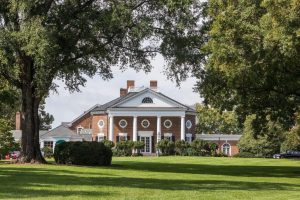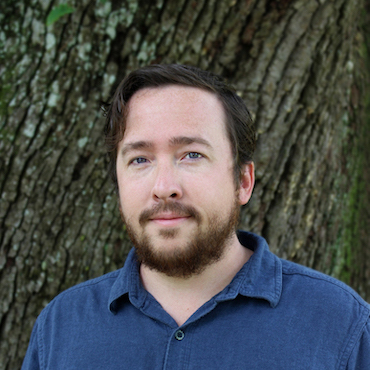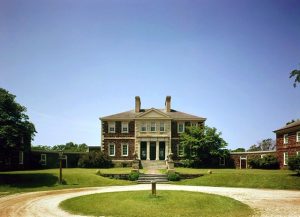 MENU
MENU

Dania Khlaifat, 2019 Rudy J. Favretti Fellow, will research Farmington in Charlottesville, the late 1700s plantation of George Divers, good friend of Thomas Jefferson.
A Fulbright scholar from Amman, Jordan, Dania graduated in May with a Master’s degree in Landscape Architecture at the University of Massachusetts with a focus on Cultural Landscape Management. She earned her BA in Architecture in 2014 at Al Ahliyya Amman University. Her interest in landscape preservation was inspired by her country’s culture and heritage. Dania’s thesis topic is on the cultural landscape of As-Salt, Jordan, a potential World Heritage Site. She was granted a scholarship to research and complete the thesis proposal which will be presented in the request as a World Heritage Site. The strengths of her Architecture, Landscape Architecture and Cultural Landscape Management background brings a multi-disciplined approach to the fellowship research on the Farmington property.

Farmington, Charlottesville
The plantation property known as Farmington was patented in 1744. In 1785 George Divers, a friend of Thomas Jefferson, purchased the property. He built the original portion of the Georgian style house and later, in 1803-04 added two Jefferson designed additions, one octagonal wing on the east side and a two-story wing with dependences on the south side. Farming and horticulture cemented the friendship between Jefferson and Divers. There was much discussion about what, how and when to plant and there is much information to be gleaned from the correspondence between the two. And Jefferson, in fact, transcribed Divers planting instructions into his Garden Book.
Divers’ niece wrote of Farmington: “Everything about it was fat except its owner . . . The gardens, of which he had three equally well nurtured, produced every fruit and flower that a temperate climate can bestow in rare perfection and high brick walls fostered many that might have perished in a less genial situation.” Hailed as the “epitome of hospitality and good cheer”, the family maintained this standard even after George Divers’ death in 1830. Divers’ niece also noted that, “Whenever Mr. Jefferson had any distinguished visitors of the bon vivant order, he always had them invited to Farmington, as furnishing rather a higher specimen of Virginia good cheer than they found at Monticello.”
Over time, Divers added outbuildings including barns, log slave quarters, a circular icehouse, and a cellar with vaulted wine storage. Subsequent owners remodeled the house and made changes to the Jefferson-designed octagonal east wing. A corporation purchased the plantation in 1927 and transformed it into the Farmington Country Club. Modern additions have been added in keeping with the colonial style. And Jefferson’s octagonal east wing was restored to its single story symmetry.
The Farmington Historical Society Foundation maintains a collection of historical information on the plantation house, gardens and surrounding land. It is their desire to document the existing landscape and its history to inform future decisions as the Country Club continues to grow.

Hayden Hammons, 2019 William D. Rieley Fellow, will research Mount Airy in Warsaw, a property that has been held by the same family since the mid-1600s.
Hayden will earn his Master of Landscape Architecture degree at Louisiana State University in 2020. He earned his BA in History at LSU in 2012 and took courses toward a MA in History at Mississippi College. His enthusiasm for historic preservation and Southern gardening was instilled in him by his father. Hayden has actively participated in the restoration of a 75-acre native prairie site threatened by invasive species. He most currently worked on a streetscape design for a 4.3 mile urban corridor in Baton Rouge for an impending Bus Rapid Transit program.
His keen interest in history and preservation inspired him to apply for a GCV Fellowship.

Mount Airy, Warsaw
Mount Airy offers the rare opportunity to study a site that has been held by the same family since the mid-1600s. This historic house, built in the mid-1700s by John Tayloe II, sits high on a ridge with a wide view of the Rappahannock River Valley. Similar to the layout of Mount Vernon, the two-story main block is flanked by curving one-story passageways that connect to two-story dependencies set forward at each end. These create a three sided enclosure with a semi-circular forecourt.
The house is surrounded by 1400 acres. The existing landscape around the structure includes shaped, level terraces and stately trees that are the remains of a once-great garden. Also located on the grounds are the ruins of an Orangery, one of the earliest built in North America.
The Tayloe family influenced plantation and political life of the era. John Tayloe II’s son-in-law, Frances Lightfoot Lee signed the Declaration of Independence. John Tayloe III was greatly involved in agriculture and politics during his tenure at Mount Airy (1792-1828). He continued the successes of his father in planting tobacco, grain and in the horse breeding arena, a high priority with both men. He was also a close friend of George Washington, serving together in the military and in the Virginia General Assembly.
Mount Airy remains as a private residence for John Tayloe Emery, his wife Catherine and their two young sons. They diligently work to maintain the family’s legacy at this historic house and property. An HGTV series featured the family and their restoration efforts. Tayloe family papers are held at the Virginia Museum of History and Culture in Richmond and plantation journals may be found at the University of North Carolina at Chapel Hill. Thus this fellowship offers an opportunity to research first-hand accounts of this site’s past and present and seen through the eyes of the those who have been its stewards for 30 decades.